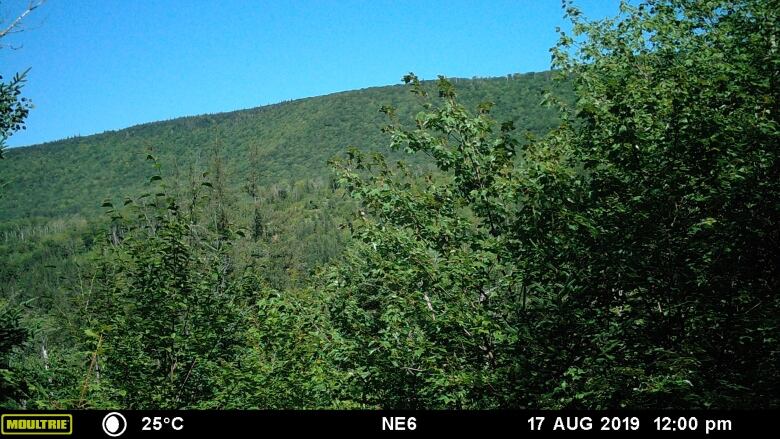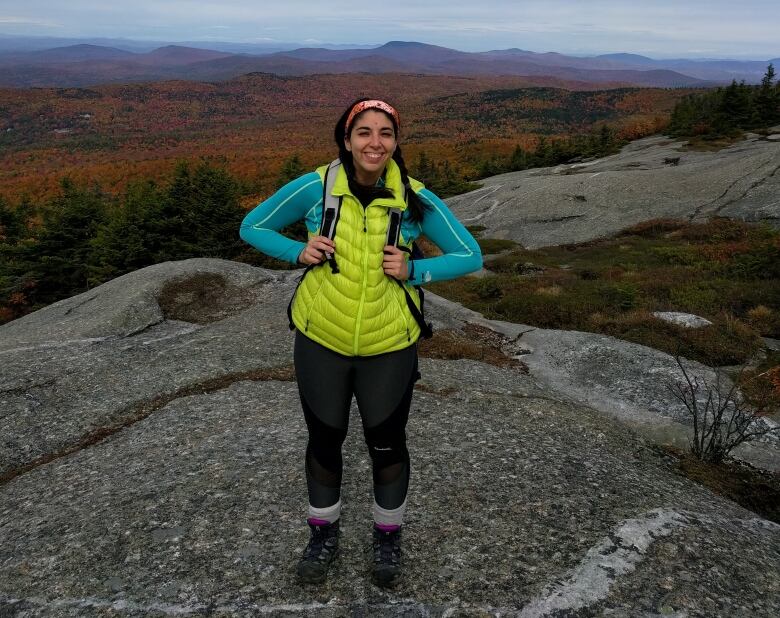Researchers using photos to study impact of climate change on fall foliage
Scientists believe warmer temperatures are pushing the fall colour season later into autumn

As autumn approaches and temperatures cool, the first blush of the season's fall foliage is likely drawing smiles of appreciation from the pumpkin spice-loving crowds.
But for one researcher, those hues of yellow, orange and redare more than just a passing fancy.
Lynsay Spaffordis examining the colour of nearly 300 Nova Scotian trees with digital precision.
Spafford, a master's student at Memorial University, is using cameras she's set up at 13 locations in Nova Scotia to collect data on when leaves and new needles emerge in the spring, when colours change in the autumn and when leaves drop.
The cameras take six photos a day in areas near Bridgewater, Kejimkujik National Park, Lunenburg, Windsor, Antigonish, Guysborough, Whycocomagh and Mabou.
The automated leaf monitoring system is the only one of its kind in Nova Scotia and one of few efforts to track leaf changes in the province, Spafford said.

"There's been a bit of a manual work done where people go out and observe and record,'I think that the leaves are very intensely green' or things like this.So that's more of a qualitative assessment," Spafford said.
"But this has the functionality of a quantitative assessment in that the actual numerical increase in the fraction of greenness can be extracted from the images,which hasn't been done to my knowledge in Nova Scotia."
On each photo, Spafford isolates a couple of dozen trees for the computer to analyze, and it provides numerical readings representing greenness, redness and blueness for each tree.
"In the spring, for example, you see a big increase in the green fractions within the regions of interest that have deciduous or evergreen trees," she said. "And that tells you the leaves are emerging ornew needles are emerging."
Unlike the NASA satellite images Spafford is also studying, which may only get a clear image of the area every week or so, her photos reveal changes on a daily basis.
The cameras were just set up in May, so Spafford hasn't collected much data yet on autumn's changing colours.

So far, her work has shown that this spring, leaves emerged about two days earlierin the western end of the province compared with her sites in eastern Nova Scotia.
The cameras will stay up until at least 2024, and possibly beyond, to help understand the patterns.
She has partnered with a researcher at the Department of Natural Resources to study how air temperature and humidity is related to leaf changes, as well as how those changes can be used to predict the amount of carbon leaves absorb in the atmosphere.
Spafford said other researchers' work has indicated that as average spring temperatures increase due to climate change, leaves are emerging earlier in spring and falling off later in the autumn.
How citizen science can help
That may be good news for so-called "leaf peepers" in New England, says Stephanie Spera, an assistant professor at the University of Richmond in Virginia.
Spera is studying whether climate change is affecting fall foliage in Maine's Acadia National Park, which is roughly the same latitude as Kejimkujik.
She's using satellites to examine fall foliage, but she's also taking an unusual approach to gathering data:she's asking people to send her their vacation snaps taken in Acadia National Park dating back to 1950.

"We're asking anyone who's been to Acadia ever in the fall to send in old photos of the parktotry andhelp us piece together this part of the story that we don't have and don't really have the technology to solve."
Spera's plea to citizen scientists was made about two weeks ago andshe's received about 50 photos, plus a folder of a few hundredsent by one person. But so far, she's only received one that was snapped before 2000.
She recognizes digging through boxes of snapshots is likely more labour-intensive than clicking through images on a computer.
"You have to actually scan a photo, which I get is a lot more work. But for science, please?" she pleads, laughing.
Spera says the recent photoswill be helpful to verify satellite data, especially since many contain geolocation information in the file.
So far, Spera's preliminary results haveshown that the start and peak of the fall colour season havemoved about half a day later each year since 2000.
Studying leaf changes will help with park management and ecological understanding, Spera says.
"It's important for environmentally to understand how these species are going to react to climate change so we could potentially plan for that in the future."












_(720p).jpg)


 OFFICIAL HD MUSIC VIDEO.jpg)
.jpg)



























































































